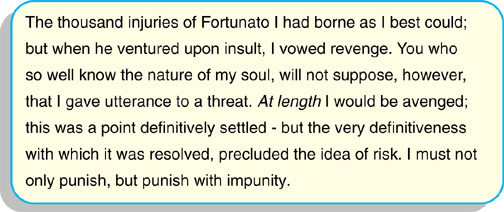 username@email.com
username@email.com
This lesson will go beyond categorizing the text to cover how to evaluate expository writing.
Critical reading involves studying a text in depth, breaking it down into understandable parts, and analyzing the meaning of the text. This method of reading contrasts with how or why we read at other times, whether it be for pleasure, for entertainment, or for gathering factual information.
Several factors are important when critically analyzing written material:
The Author
Since they are not automatons, authors put themselves into what they write; critical readers should keep this fact in mind. First, consider what unstated assumptions the author is making. Assumptions are beliefs we consider to be true with little or no proof. When reading critically, ask yourself the following question: What must be true in order for the author’s argument to be true?
When reading, you should look for the following types of clues to help you make inferences:
Readers are constantly making inferences, particularly when reading short stories because the genre’s brevity requires more from the reader. For example, in Edgar Allan Poe’s short story “The Cask of Amontillado,” the opening paragraph calls for the reader to make an inference about the narrator.

A number of inferences can be made based on these few sentences.
Another element of critical evaluation is determining an author’s perspective or point of view. Point of view refers to the author’s feelings and attitudes about the topics being discussed. Understanding an author’s point of view leads to a better comprehension of the writer’s purpose.
Ask the following questions in order to determine an author’s point of view or attitude about a topic.
The following quotation is from a speech given by Chief Sitting Bull to Native American children at a Catholic school on a reservation.
| In future your business dealings with the whites are going to be very hard, and it behooves you to learn well what you are taught here. But that is not all. We older people need you. In our dealings with the white men, we are just the same as blind men, because we do not understand them. We need you to help us understand what the white men are up to. My grandchildren, be good. Try and make a mark for yourselves. Learn all you can. |
Sitting Bull cared deeply for the welfare of Sioux children; he encouraged them to continue their education. His distrust of white Americans can be detected when he said that dealing with the whites would be “very hard” and that the older Sioux generation needed the young people to find out “what the white men are up to.”
The Purpose
A second important factor in critically evaluating a written work involves recognizing an author’s purpose. Being able to accurately recognize a writer’s purpose allows you the chance to respond appropriately.
An author usually writes for one or more of the following reasons:
The following table illustrates common questions readers should ask to help determine an author’s purpose.
|
Author’s Purpose
|
|
|
Element |
Questions to Ask |
|
Title |
What does the title suggest about the topic and the author’s attitude? |
|
Tone |
What is the author’s tone? Is it formal, friendly, sarcastic, serious, or humorous? What evaluation can you make about the author’s purpose based on the tone? |
|
Content |
What kind of detail does the author include? What is the purpose of including these types of details? Does the writer state a purpose or thesis? |
|
Pattern of Organization |
How is the material organized? Compare/contrast, cause/effect, problem/solution, etc. |
|
Language |
Are there many descriptive words, technical terms, or emotional words? What kinds of transitional words are used? For what purpose might an author use these types of words? |
The Audience
Knowing an author’s intended audience can help you understand the author’s purpose for writing. For example, Jonathan Edwards spoke to a room full of churchgoers, and his purpose was to compel them to seek God.
In order to determine the author’s intended audience, ask the following questions.
The following excerpt is from a speech given by Patrick Henry to a room full of delegates at the Second Virginia Convention in 1775.
| Mr. President, it is natural for man to indulge in the illusions of hope. We are apt to shut our eyes against a painful truth, and listen to the song of that siren, till she transforms us into beasts. Is this the part of wise men, engaged in a great and arduous struggle for liberty? |
Henry pointed out that it was natural to have “illusions of hope,” which suggests that many in the audience did not share his opinion that going to battle against the British was necessary. Henry’s purpose is to convince the delegates that war is the only course of action.
Americans in the twenty-first century were not Jonathan Edwards’s or Patrick Henry’s intended audience, so they might not fully grasp the significance of their work. Remembering the intended audience will enable you as a critical reader to better evaluate and understand the complexities of the writer’s work.
Read the following stanza from Robert Frost’s poem “Stopping by Woods on a Snowy Evening.”
Whose woods these are I think I know.
His house is in the village though;
He will not see me stopping here
To watch his woods fill up with snow.
What can you infer from this passage?